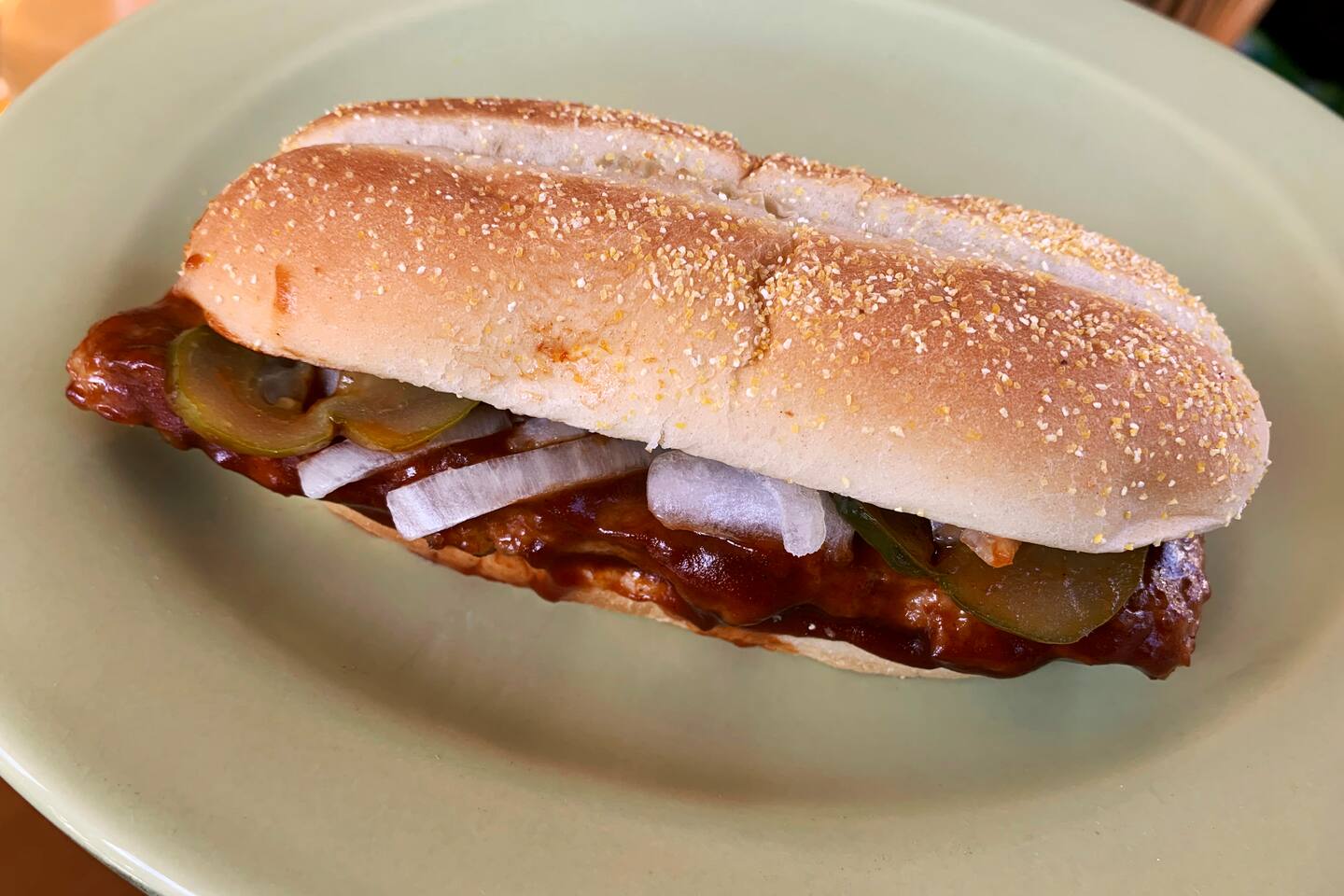The McRib is back at McDonald’s, and after a taste, I still don’t get its cult appeal

“I have eaten the ribs of God!” Homer intones, drool falling from his chin, sauce clinging to his shirt and empty boxes of “Rib-wich” piling up at his feet.
As most Americans have known for decades, a real McRib features no bones at all, whether from God, a pig or Adam himself. Decades ago, a University of Nebraska meat scientist, Roger Mandigo, relied on a relatively new technology to develop a processed product that would increase sales of pork shoulders. Created by the military (with its constant need to feed troops on the cheap), this technology took scraps and trimmings and transformed them into so-called structured meats, which could be molded into anything, including dinosaur-shaped chicken nuggets for those who wanted to really confuse impressionable children about the origins of meat.
McDonald’s, in turn, took Mandigo’s ideas and developed its own pork patty. Rene Arend, a classically trained cook from Luxembourg, had been hired as McDonald’s product development chef, and he’s credited with creating the McRib. He also apparently suggested it be molded into the shape of a miniature rack of ribs, which is perhaps the most ingenious part of the sandwich: a highly processed patty that resembles something found in nature, as opposed to, say, a Chicken McNugget, which looks like something your cat coughed up.
Introduced nationwide in 1982, the McRib was something of a bust at first, at least compared to the runaway success of the McNugget. It was taken off menus in 1985, only to make sporadic and seasonal returns over the decades, no doubt contributing to the cult-like following that has popped up around it. (Numerous sources have suggested the sandwich’s now-you-see-it, now-you-don’t behavior is tied to basic supply and demand: When McDonald’s features the McRib, the demand for pork naturally skyrockets, leading to increased costs for shoulders and/or trimmings, which quickly makes the product untenable for a chain that runs on low costs.)
McDonald’s reintroduced the McRib on Wednesday, the first time it has been available nationwide since 2012 (unless your nation is Germany, where the sandwich is offered year-round). The sandwich’s return is — all together now — for a limited time only.
I can’t remember the last time I had a McRib, and I don’t think that’s because I’m trying to block out the memory. Given what we know about processed foods — as colleague Tamar Haspel pointed out, they can have twice the calories per gram as unprocessed foods — you really shouldn’t spend much time looking under the hood (a cornmeal-dusted roll, split down the middle) of your McRib. The more you stare at the patty, with its perfectly parallel lines of machine-stamped “bones,” the more you’ll lose your appetite.
Like the McDonald’s hamburger, the McRib is soft food, its only resistance provided by the pickle and onion garnishes, which is sort of paradoxical. Pickles and raw onions are what Texans love to eat with smoked brisket. Regardless, I’m grateful for the garnishes: They provide the crunch and acid, two important counterpoints to this soft-serve of a sandwich, though, honestly, the barbecue sauce does most of the heavy lifting. I’m not sure what this thin brick of pork would taste like without the shellac of sticky, tangy sauce, and I’m not sure I want to know.
The McRib belongs to another era, when manufacturing and technology were thought to be the solutions to many of our problems. (Some still think that way, of course.) We have spent years now trying to undo the damage of products like this, seeking out whole ingredients and foods that our grandparents would have considered suitable for the table. There’s no reason to keep idolizing an old god just because it knows how to satisfy our cravings for salt, sugar and fat.






